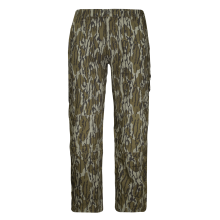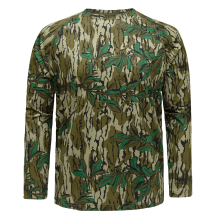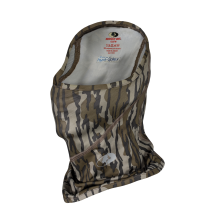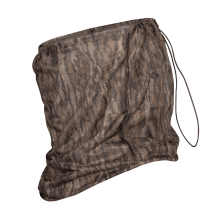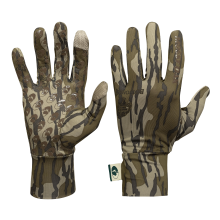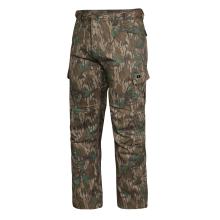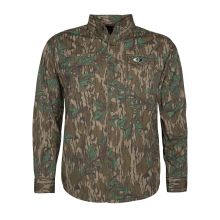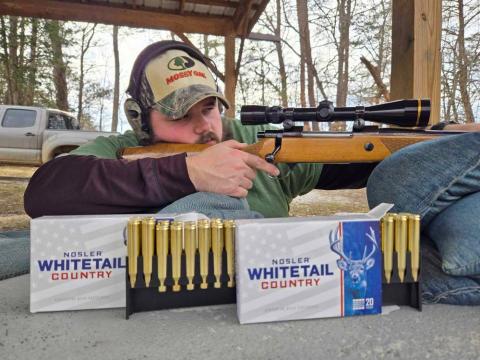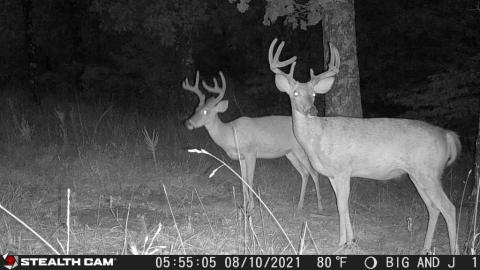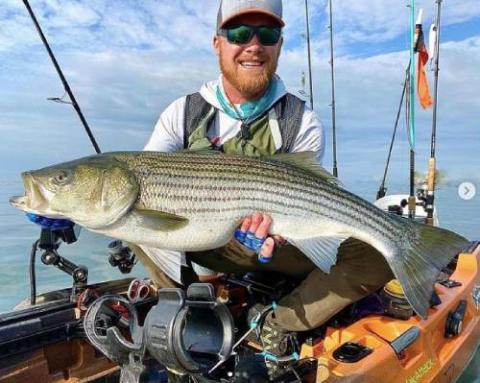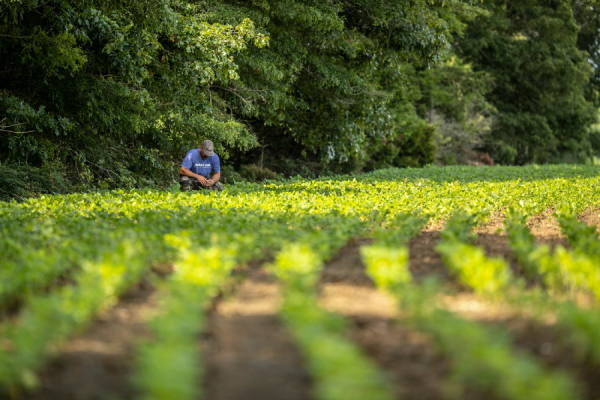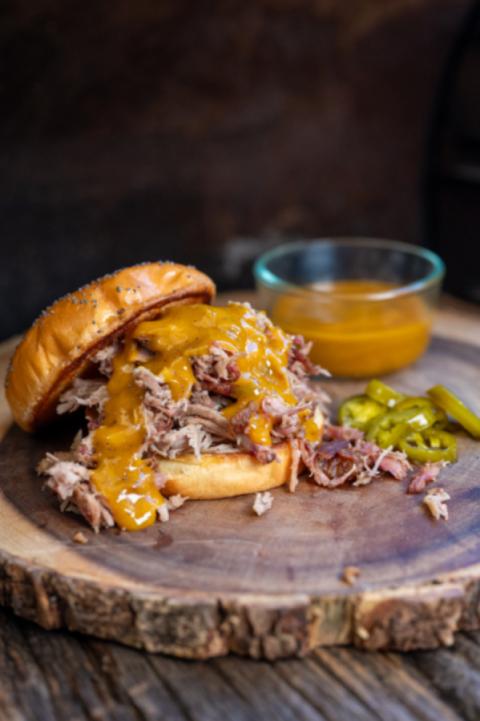Bill Gibson, Head Trainer of Mossy Oak Gamekeeper Kennels
Retriever Training Steady to Flush, Shot, and Fall

Two of the most important attributes of a started or finished dog in terms of safety and hunt quality are steadiness to flush, shot and fall and complete quietness in the duck blind. There is nothing more annoying during a hunt than a dog that whines or barks when birds are working, and he/she breaks on the sound of gunfire. These undesirable qualities are normally the result of the trainer not spending ample time with the dog during the initial steadiness phase of training, combined with the owner/handler not taking the time to properly transition the dog from training to hunting scenarios. I have often read that a dog’s retrieving desire (prey drive) will be suppressed if steadiness is placed before retrieving. I do not agree with this theory. Instead, I opine that when properly done steadiness training has very minimal or no effect on, and will actually enhance “prey drive.” Why would steadiness training enhance “prey drive?” The answer is that the retrieve is the dog’s reward for steadiness and pup always wants his/her reward.
Be advised and understand that steadiness is not achieved by a few quick lessons with the dog at the beginning of obedience training; instead, it is a continuing process, the foundation of which is laid in early training and is progressive through all levels of training and throughout the dog’s hunting years. There is no one best method for training in steadiness. All dogs are different and progress through each and all phases of training in different time frames. Only after a dog finishes basic obedience, is it time to move on to the retrieving phase of training, but obedience must still be reinforced at the start, during, and at the end of each and every training session.
At the start of each retrieving session have the dog sit, throw a short dummy, tell the dog to stay and walk backwards to the dummy with your arm extended and your hand in the classic police stop position. When you reach the dummy and while keeping your eye on the dog, kneel down and pick the dummy and then walk back to the dog with the dummy in hand. Why do this? Because this teaches the dog that every thrown dummy and later on that every shot bird is not for him/her to retrieve. After a few days of starting in this manner you can throw the dummy back toward the dog, approach, and again pick it up without any movement by the pup. As the training days’ progress the dummy can be thrown to the dog’s feet, picked up, and he/she should not make any attempt to retrieve.
During each training session the pup should be given a good mix of marks, trailing memories, circle memories, unknowns, with delays on the send and diversions on the return. At the end of each session, finish as you started with obedience drills. After the beginning of basic retrieving drill(s), if you start the retrieving sequence with a memory drill, end the session with a mark and vice versa and then finish the training day with obedience. You can use the pup’s name for a release command or any other word of your choosing. A hint, I prefer to use the pup’s name and a snap of the fingers on my casting hand for a release command. The duality of these commands prevents confusion should another dog on the hunt have the same name as yours or the same release command as yours.
Some Pointers to Remember; Other Do’s and Don’ts
1. As you work the dog at heel, occasionally throw a dummy and give the command “Sit” which is normally done at this stage using one blow of the whistle. This will later pay dividends when training the dog to sit on the flush.
2. To minimize thresholding, vary the distance on marks and memories so that the dog does not build in a threshold distance, i.e. a distance that he/she is reluctant to go beyond.
3. To train the dog to go through barriers, set up training scenarios that use barriers. A barrier can be a change of color in the grass, a change from a field to a wood line, a change from open water to flooded timber, a ditch, a trail, etc.
4. To introduce your dog to gunfire, use a remote launcher at a distance of at least one hundred (100) yards on the first day and as long as the dog shows no adverse reaction, move closer each day until the dog is next to the gunfire. Initially, every time the launcher is fired, launch the bumper toward the pup for a short retrieve, so that the dog associates the bumper and the retrieve with gunfire.
5. Don’t shoot fireworks around the pup, expose the dog to a fireworks show, take the dog to a gun range, or engage in hunting activities with many guns shooting, until after the dog is properly introduced to gunfire in both training and hunting scenarios. No good can possibly come of these unless you consider gun shyness and a complete loss of steadiness as “good.”
6. Don’t expect too much too soon out of your pup or attempt to push him beyond his/her capabilities during training or during his/her first hunts. The temptation to show off pup’s skills to your buddies is great but must be avoided at all cost. When the desire to impress surfaces, again remember, always train for success, not for failure, and both you and your dog will be the better for it.
Caution Teething: When pup is four to five months of age he/she will start losing both top and bottom baby teeth that are being replaced with adult teeth. At five to six months of age the baby canine teeth will fall out and be replaced by adult canine teeth. This natural occurrence is normally accompanied by sore, red and bleeding gums. This can present a problem during training sessions. During this transition the pup will likely start dropping the dummy. Therefore, it is oftentimes better to stop the retrieves than to run the risk of pup picking up the unwanted habit of dropping. During teething, a quick examination of the gums for redness and/or the appearance of blood on the dummy are signals that pup may be experiencing pain when picking up and carrying the dummy. If you notice that pup is reluctant to pick up and/or drops the dummy, simply inspect the gums for redness and the dummy for blood. Stop the retrieves for a few days and then resume when the mouth is back to normal. In the interim, you can and should work on obedience drills.
Retriever Steadiness and Transition to Hunting

To maintain the high degree of steadiness attained during training, initially, the dog should be restrained by using a “tree lead” tied to the duck blind to prevent him/her from breaking during his first hunt and also by limiting the number of retrieves. Any shortcuts in steadiness training will most assuredly surface and become evident during his/her first hunt and the unwanted consequences will be a dog that constantly moves around in the blind and a dog that breaks on the shot and/or flush. Likewise, if engaged in hunting uplands, I do not recommend off-lead live bird walk-ups for a young dog because the excitement generated will most assuredly result in at least a breakdown, if not a total collapse, in pup’s steadiness. Instead of chancing the pup’s becoming unsteady keep the dog on lead until you are absolutely certain that he/she will not break.








